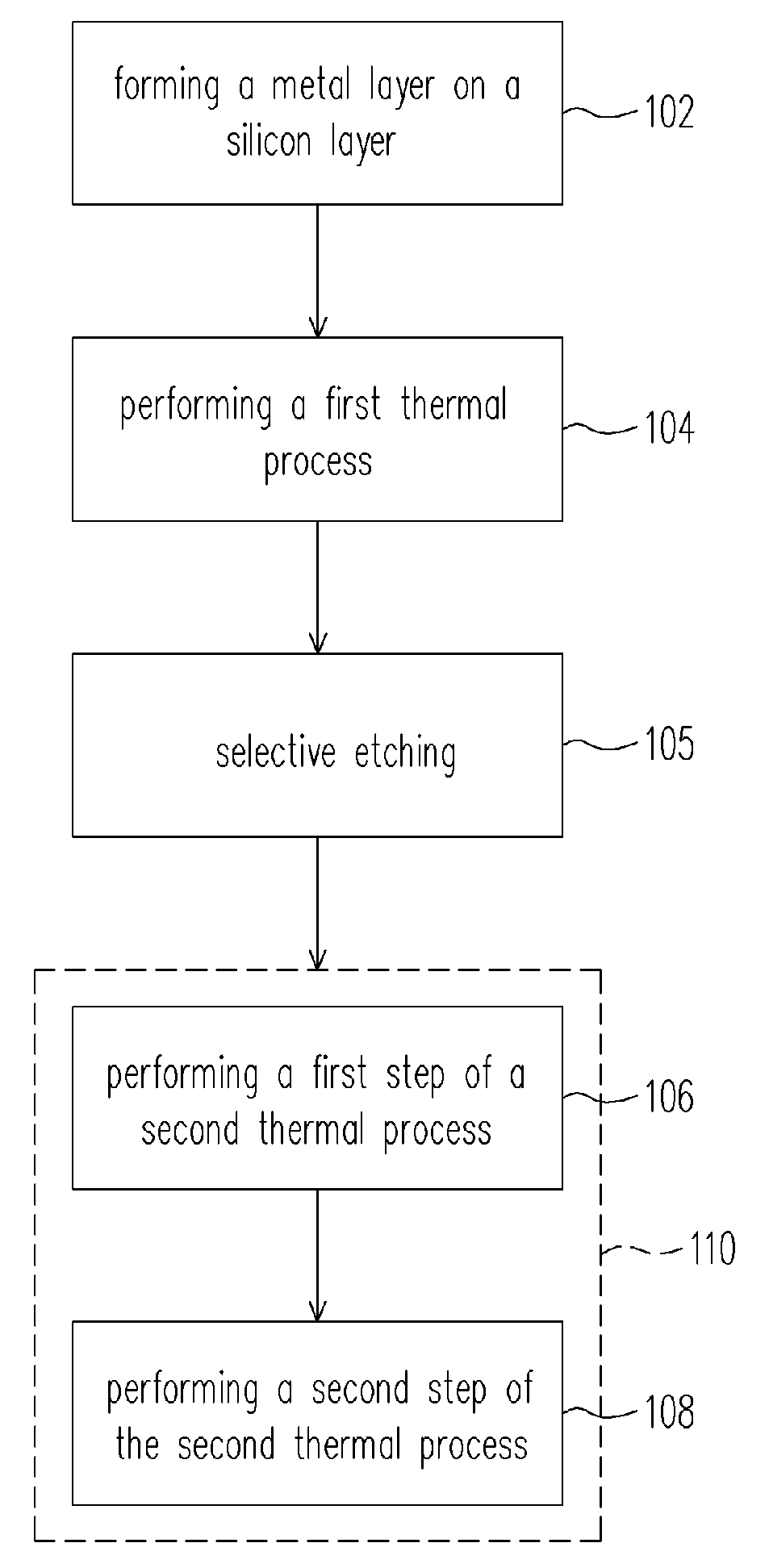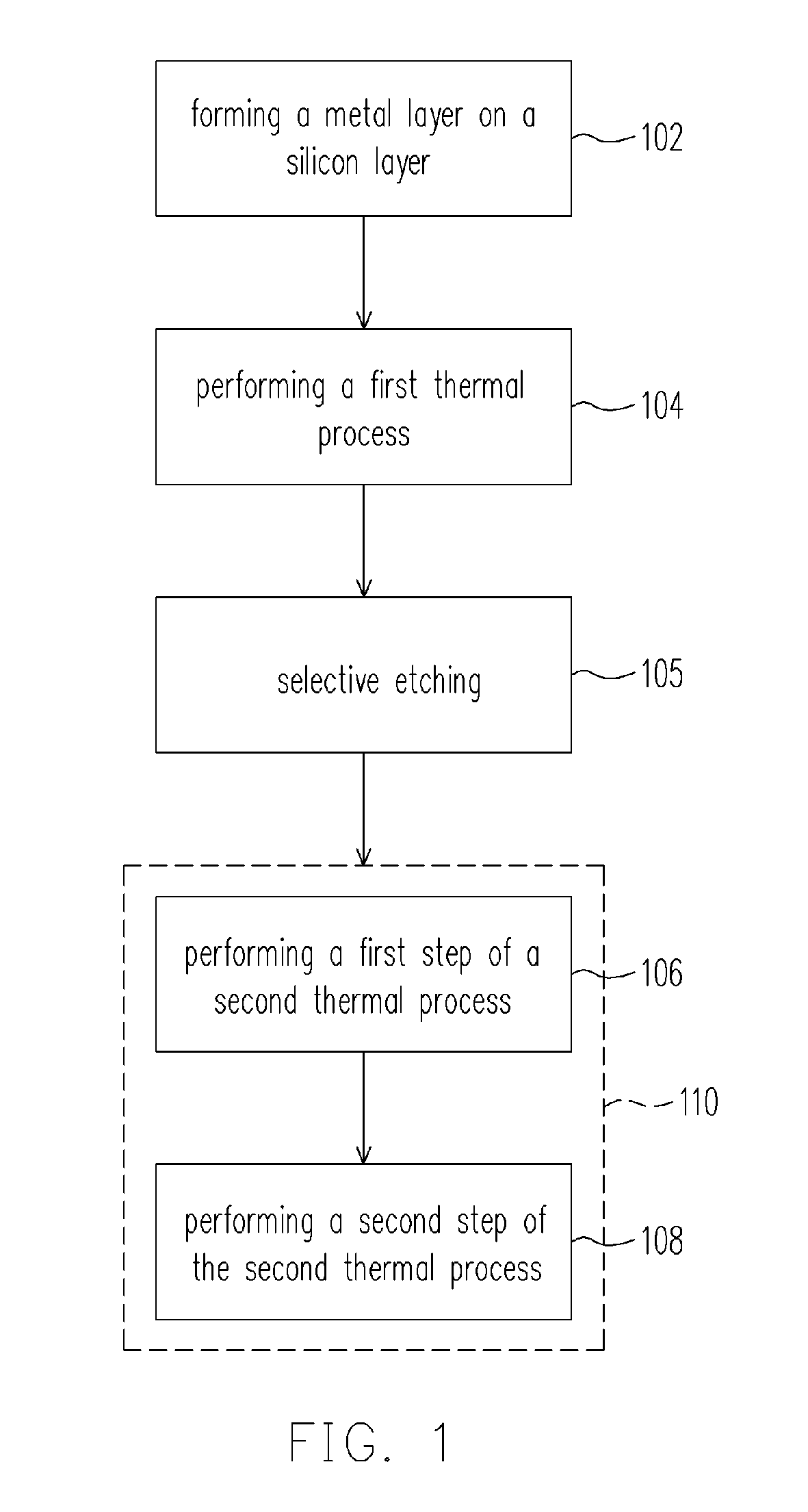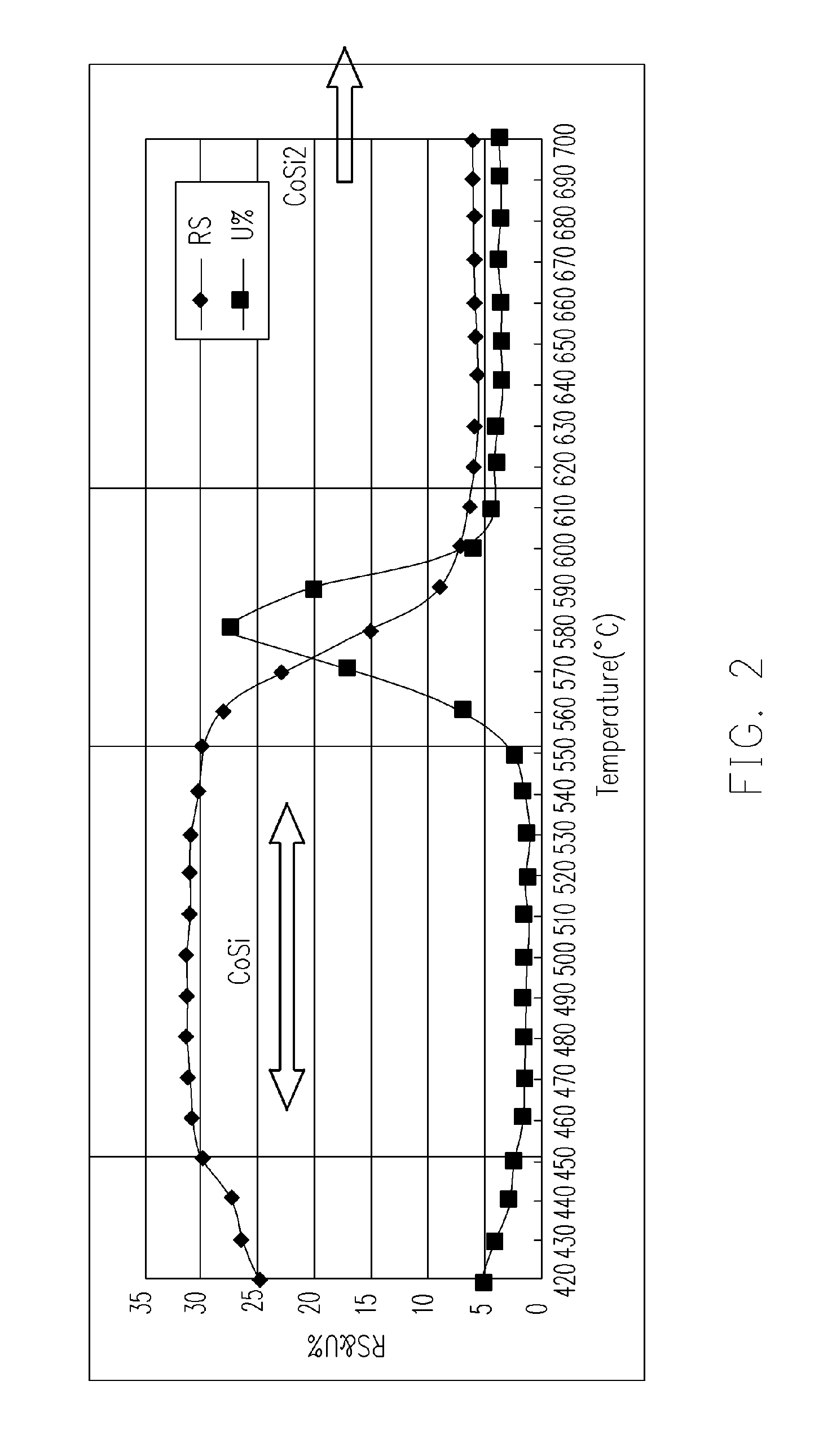Salicide process
a technology of sodium chloride and salt, applied in the direction of sodium chloride devices, basic electric elements, electrical equipment, etc., can solve the problems of deterioration of metal silicide sheet resistance, rough and non-uniform grains, etc., to achieve the reduction of metal suicide sheet resistance and junction leakage, avoid roughness of metal silicide grain, and improve metal silicide grain uniformity
- Summary
- Abstract
- Description
- Claims
- Application Information
AI Technical Summary
Benefits of technology
Problems solved by technology
Method used
Image
Examples
Embodiment Construction
[0015]Reference will now be made in detail to the present preferred embodiments of the invention, examples of which are illustrated in the accompanying drawing.
[0016]FIG. 1 is a flow chart showing a salicide process according to an embodiment of the present invention. As shown in FIG. 1, the salicide process of the present invention comprises the following steps, 102˜108. First, a metal layer is formed over a silicon layer (step 102). In an embodiment, the metal layer is selected from titanium, cobalt, platinum, palladium and an alloy thereof, for example. In another embodiment, the metal layer is selected from nickel and an alloy thereof, for example. The metal layer is formed with a sputtering deposition process, an evaporation process or other suitable deposition process. The silicon layer may be a silicon substrate, a polysilicon layer and the like. In an embodiment, the silicon layer comprises a source region, a drain region and a gate electrode of a MOS transistor, for example...
PUM
| Property | Measurement | Unit |
|---|---|---|
| temperature | aaaaa | aaaaa |
| temperature | aaaaa | aaaaa |
| size | aaaaa | aaaaa |
Abstract
Description
Claims
Application Information
 Login to View More
Login to View More - R&D
- Intellectual Property
- Life Sciences
- Materials
- Tech Scout
- Unparalleled Data Quality
- Higher Quality Content
- 60% Fewer Hallucinations
Browse by: Latest US Patents, China's latest patents, Technical Efficacy Thesaurus, Application Domain, Technology Topic, Popular Technical Reports.
© 2025 PatSnap. All rights reserved.Legal|Privacy policy|Modern Slavery Act Transparency Statement|Sitemap|About US| Contact US: help@patsnap.com



